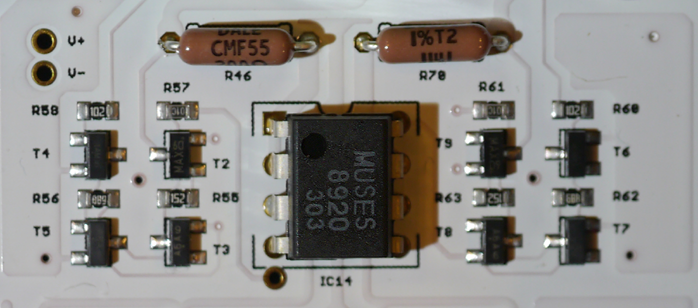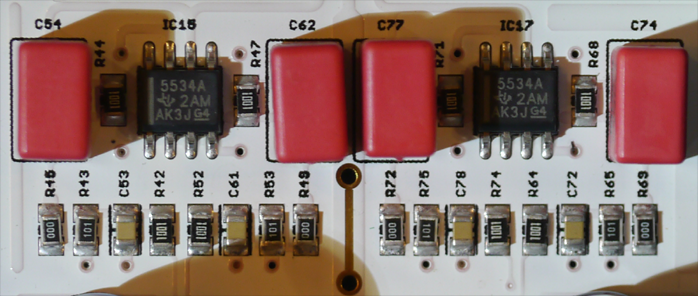This review page is supported in part by the sponsors whose ad banners are displayed below |
 |
 |
|
 |
After dispatching the review unit, Ryu Takahashi checked in. They'd "found a bug we missed after we'd made some final changes to our CPU firmware. This only affected JPlay's ability to play back DSD. We also implemented a final firmware upgrade which improves the headphone output's sound quality by changing the digital volume." He asked that I return the unit for the updates. Just the Jplay fix "could of course happen over USB." I took this opportunity to inquire. How could firmware changes improve a digital volume control?
|
 |
Big Atmel CPU chip, Xilinx FPGA, Atmel Mega 6U4, Wolfson WM8804, 2 x LC157 Eprom 8-bit micro controllers
|
"Originally our volume knob linked both line and headphone outputs. Now we separated these operations and then also optimized the headphone amp's IC chip controller. This elevated its subjective sound quality."
Meanwhile an industry acquaintance wrote in. "This morning I received the $549 AMI Musik DDH-1 you reviewed earlier. I am running it with a Squeeze-Upgrade power supply. Out of the box the sound is big and sadly better than my Northstar Design Dac 32 DAC." Considering how his DAC had sold for $2.995, that was mighty brutal of the li'l DDH-1. But it made me feel even better recommending that machine. Brutal is beautiful.
|
 |
|
|
|
|
 |
About strategic selection of opamps, "here we didn't repeat the socketed recipe of the DDH-1 even though a real expert could still retrieve the chip amp from the PCB. For most DS5 customers however we really don't recommend it. We were very careful to select the best-sounding Muses 8920* chip. As I said earlier, we first planned this model as a higher-end full-size deck before we decided to reposition it. Hence we shrunk back the form factor but stuck with the high-performance parts we'd already chosen."
On why AMI decided to partner with Clicktronic for their included USB cables, "Clicktronic is a German manufacturer of high-quality home theater and hifi equipment. The trademark belongs to the Wentronic group. They were founded in 2002 with the vision to create a range of quality A/V accessories. |
|
|
 |
"To date over 1.4 million Clicktronic products have sold. They offer a lot more
precision engineering and signal quality than any generic extra items could ever hope to provide. They
constitute a logically conceived and designed supplementary chain which on technology and
quality achieves sophisticated hifi standards.
The transmission of clear and unadulterated signal is the only thing that matters to Clicktronic. And that's the same philosophy we have at AMI." |
| ____________________________________________________________________________________________________ |
* The Muses 8920 is a dual opamp with Jfet inputs based on New Japan Radio Corp's prior R&D into their flagship Muses 01/02 chips. The 8820 is the bipolar version. NJR also have a 32-pin electronic volume control chip that's used in the Pass Labs three-chassis preamp.
|
|
|
DOA. Did 'On' Ascend? If you don't do instructions, the absentee light show upon plugging in the 5V/15w power supply will suggest dead on arrival. No power switch. Man up and read. Now you know to briefly depress the rotary volume control. Joy and tiny white pin pricks of light. This is one elegant li'l deck. It tones down the firstborn's brighter bigger blue LEDs. If you've wondered how the lights double up to show both sample rate and volume, the latter function only activates with turning the knob. A few seconds later it defaults to freq specks again. I started off at a lowly 44.1. Redbook AIFF data piped in from Cambridge Audio's digital iPod dock via Chris Sommovigo's Tombo Trøn cable.
|
 |
Setting the output to HP, input to coax, I had instant sound over Audeze LCD-3. My 160GB iPod Classic got set to endless random play and break-in was on.
|
 |
  |
 |